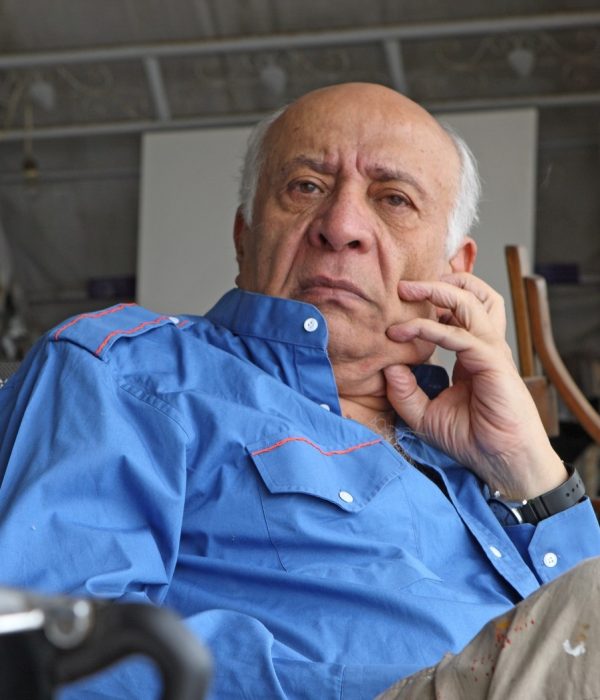Photograph of Lebanese artist Hussein Madi.
In recent years, media reports have raised concerns over a worrying decline in the Arab cultural scene. Government restrictions on the media and artistic expression have taken a toll on art and cultural production across the Arab world, whether in literature or art. In Lebanon, where the ongoing liquidity crisis has continued unabated since 2019, discontent with the state and worsening economic conditions were intensified by the pandemic and the disastrous explosion of Beirut’s port in August 2020, a tragedy still fresh on the minds of many. The blast decimated large parts of Beirut’s arts and cultural neighborhoods, Gemmayzeh and Mar Mikhael, among several others. Its aftermath witnessed damage not only to galleries, museums, and historic architecture but also to livelihoods, leading many Lebanese artists to emigrate after the explosion. Small victories have risen since then as museums and galleries slowly recover. Still, critics worry about an artistic drought, especially after the recent passing of one of Lebanon’s renowned artists, Hussein Madi.
The Lebanese art community has suffered a significant loss with the departure of several artists in recent years, both at home and in the diaspora. We bade farewell to Lebanese painter and sculptor Huguette Caland in 2019 and Lebanese-American writer and visual artist Etel Adnan in 2021, both of whose art and works Al Jadid has covered extensively in the past. Now, painter, sculptor, and printmaker Hussein Madi leaves behind a colorful legacy. Madi, often called a “maestro” of his art by colleagues and critics, passed away in Beirut on January 17, 2024 at 86 years old. His eye-catching style made his art easily recognizable wherever it was displayed, whether in various galleries and museums worldwide or on his apartment walls, creating striking images through his visual language, bird motifs, curvy women, and geometrical symmetry. In the words of critic Farouk Youssef, quoted by Mohammed Houjeiri in Al Modon, “Hussein Madi’s passion for nature made him go beyond the stage of closeness to it, to live in its heart and feel its essence. He draws and sculpts not as if inspired by it, but as if performing its work.”
Hussein Madi was born in the Lebanese village of Sheba’a, located at the foot of Mount Hermon, on February 4, 1938. From an early age, he was deeply influenced by nature, taking in the surrounding nature of his home and from his travels with his grandfather as he observed his day-to-day work. Madi was constantly on the move; his father, Ali Madi, was a soldier in the Internal Security Forces, which forced the family to move from one Lebanese region to another frequently. Such a childhood allowed him to “store the beauty of nature in his memory,” as Mohammed Houjeiri states in Al Modon.
(Al Jadid previously published articles on Huguette Caland and Etel Adnan. “Huguette Caland (1931-2019): From Beirut to Paris to Los Angeles and Back, Freedom Was Her Companion” by Naomi Pham appeared in Vol. 23, No. 77, 2019. “Poet, Publisher, Painter, and Patron of the Arts: Remembering the Extraordinary Etel Adnan (1925-2021)” by Elie Chalala appeared in Vol. 25, Nos. 80/81, 2021.)
Excerpted from Naomi Pham's "Hussein Madi (1938-2024): An Artist Whose Lifelong Embrace of Nature Created an Art That Will Endure," which appeared in Al Jadid Magazine, Vol. 28, No. 85, 2024 and Inside Al Jadid Reports, No. 73, 2024.
Copyright © 2024 AL JADID MAGAZINE

